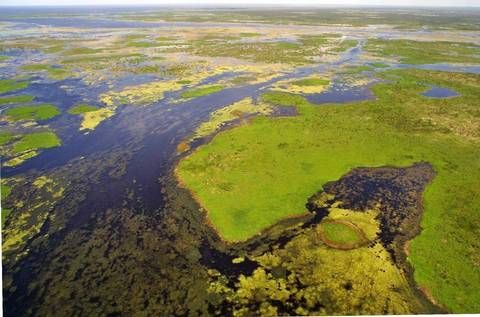Deep Injection to Save the Everglades?
Published on by Water Network Research, Official research team of The Water Network in Government
South Florida water managers are considering a plan that would flush water deep underground. The pumping would help protect the aging dike and prevent polluted lake releases from polluting the coasts, but waste the water needed in South Florida to restore the wilted Everglades.
The deep injection wells would help control the level of water in the lake during the rainy season, protect its aging dike and help eliminate the need to flush dirty lake water to either coast, which last year outraged residents and business owners when it triggered smelly toxic blooms and killed fish. But environmentalists say it would do nothing to help fix the south end of the Everglades and instead waste valuable water that original restoration plans called for saving.
“If we inject that water underground, we only take care of half the problem,” said Audubon Florida scientist Paul Gray. “The scale that we’re talking about here has never been contemplated or done before. … We’re talking something very untested.”
They also worry the plan is meant to undermine a push to build a massive reservoir south of the lake backed by Republican Senate President Joe Negron, whose hometown has been hammered by the lake releases, but opposed by powerful sugar farmers.
 At a meeting Wednesday, the U.S. Army Corps of Engineers, which is in the midst of mapping out fixes for the Lake Okeechobee watershed, provided an update on alternatives in a planning process expected to take three years.While solving the water storage problem relies heavily on building a series of reservoirs around the lake — which originally provided much of the freshwater flowing south into South Florida — the plans also call for constructing wells that store and recover water as well as the injection wells that dump water in the boulder zone beneath the Florida aquifer.
At a meeting Wednesday, the U.S. Army Corps of Engineers, which is in the midst of mapping out fixes for the Lake Okeechobee watershed, provided an update on alternatives in a planning process expected to take three years.While solving the water storage problem relies heavily on building a series of reservoirs around the lake — which originally provided much of the freshwater flowing south into South Florida — the plans also call for constructing wells that store and recover water as well as the injection wells that dump water in the boulder zone beneath the Florida aquifer.
About 300 recovery wells, called ASRs, were originally part of restoration efforts. But an 11-year study concluded so many wells would likely lead to pressure problems and proposed scaling back the number to about 130, with 80 near the lake.
To make up for that lost storage, water managers in January resurrected the decade-old idea of flushing water into the injection wells.
Up to 15 millions gallons of water a day could be dumped at each site, said Bob Verrastro, the district’s lead hydrologist. If just 30 to 60 were placed around the lake, lake water levels could be reduced by a half foot to a foot every year, he said. The technology is widely used by utilities around the state that pump wastewater from sewer treatment plants into about 180 injection wells.
The fix would also be relatively cheap and fast: The land where the wells would be dug is already government owned or operated, Verrastro said, meaning construction could begin “likely decades in advance of the reservoirs being constructed.”
But environmentalists and scientists say relying so heavily on the injection wells wastes too much water, has bigger implications for wider restoration efforts and needs to be investigated more thoroughly.
“It’s taking 24-7 pumping all the time to get to these levels [of storage] you’re projecting,” said Mark Perry, executive director of the Stuart-based Florida Oceanographic Society
And while it might solve the short-term problem of having to flush water to the St. Lucie and Caloosahatchee Rivers to protect the lake’s aging dike, it leaves South Florida out of the picture, where decades of flood control and sea level rise are threatening water supplies. Even if the wells are used only during high water emergencies, environmentalists say it fails to address the bigger problem.
Source: Miami Herald
Media
Taxonomy
- Water
- Environment
- Restoration
- Lake Management
- Well Drilling